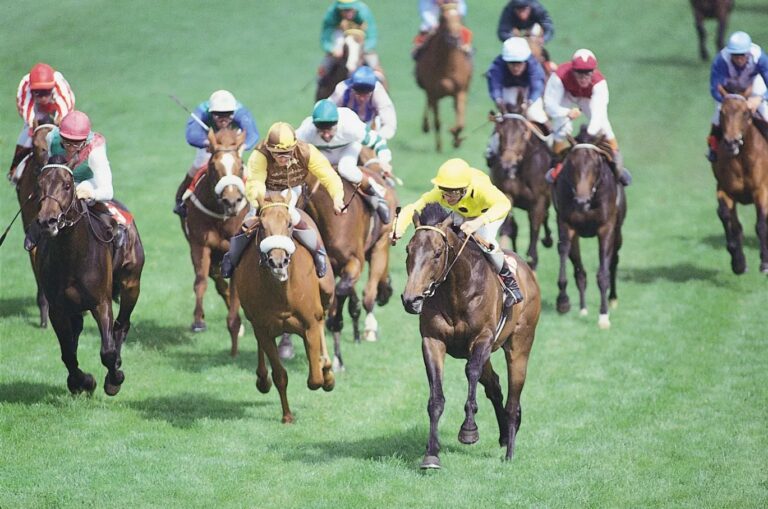Horse racing is a sport steeped in history and tradition, evolving from ancient practices to the high-tech spectacles we see today. This article traces the journey of horse racing from its origins in ancient civilizations to modern-day events, highlighting key historical milestones, changes in racing rules, and the development of famous racecourses. We’ll also explore the role of technology and modern betting, concluding with future trends in the sport.
The Origins of Horse Racing: Early Civilizations and Traditions
Ancient Beginnings
Horse racing is one of the oldest sports, with origins that can be traced back to ancient civilizations. The first recorded horse races were held over 4,000 years ago among the nomadic tribesmen of Central Asia, who used horse racing as a way to demonstrate their horsemanship skills.
Greek and Roman Influence
The Greeks and Romans played significant roles in the early development of horse racing. In ancient Greece, horse racing was a major event in the Olympic Games, starting in 648 BC with chariot races. The Romans further popularized the sport by organizing large-scale chariot races in their circuses, the most famous being the Circus Maximus in Rome. These events were not only sporting competitions but also significant social gatherings.
Medieval and Renaissance Periods
During the medieval period, horse racing continued to evolve. The English nobility started organizing horse races as a form of entertainment, and by the Renaissance, it had become a well-established sport. The first recorded race in England took place in 1174 at a fair in Smithfield, London.
The Development of Thoroughbred Racing
The Birth of the Thoroughbred
The modern sport of horse racing began to take shape in the 17th and 18th centuries with the development of the Thoroughbred horse. The breed originated from three foundation sires imported to England: the Byerley Turk, the Darley Arabian, and the Godolphin Arabian. These horses were crossbred with native mares, producing the agile and speedy Thoroughbreds known today.
Establishment of Formal Races
The first formal race meeting was held in Newmarket, England, in 1665. Newmarket remains a central hub for British horse racing. The Jockey Club was founded in 1750 to regulate the sport, establish rules, and ensure fair play. Classic races like the St. Leger Stakes, the Oaks, and the Derby were inaugurated in the late 18th century, solidifying the structure of modern horse racing.
Global Expansion
Thoroughbred racing spread rapidly from Britain to other parts of the world. The United States saw its first organized race in 1668 on Long Island, and the Kentucky Derby, the oldest continuously held sporting event in the U.S., was first run in 1875. Similarly, horse racing gained popularity in countries like Australia, France, and Japan, each developing their own prestigious races and traditions.
Significant Changes and Innovations in the 20th and 21st Centuries
Technological Advancements
The 20th century brought significant technological advancements that transformed horse racing. The introduction of the starting gate in the 1930s ensured fairer starts, while photo finish technology, first used in 1936, allowed for accurate determination of race results. These innovations enhanced the sport’s integrity and fairness.
Improved Racing Surfaces
Advances in track surfaces also played a crucial role. Traditional dirt tracks were supplemented by synthetic surfaces, designed to reduce injuries and provide a more consistent racing surface. The introduction of turf tracks added variety and new challenges to the sport.
Enhanced Training and Veterinary Care
Modern training techniques and veterinary care have significantly improved, leading to healthier and more competitive horses. Advances in nutrition, medical treatments, and injury prevention have extended the careers of many racehorses.
Global Competitions
The latter part of the 20th century saw the globalization of horse racing with the establishment of international competitions such as the Breeders’ Cup in the United States, the Dubai World Cup, and the Japan Cup. These events attract the best horses, jockeys, and trainers from around the world, elevating the sport to new heights.
The Role of Technology and Modern Betting in Horse Racing
Digital Innovation
The digital age has revolutionized horse racing in numerous ways. High-definition broadcasts and live streaming have made races accessible to a global audience. Sophisticated data analytics provide detailed insights into horse performance, helping trainers, owners, and bettors make informed decisions.
Online Betting
The rise of online betting platforms has transformed the betting landscape. New horse racing betting sites offer a wide range of wagering options, from traditional bets like win, place, and show to exotic bets such as exactas, trifectas, and superfectas. These platforms provide real-time odds, expert tips, and secure transactions, making betting more convenient and engaging.
Safety and Integrity
Technology also plays a crucial role in ensuring the safety and integrity of the sport. Advanced monitoring systems detect illegal betting activities, and strict regulations govern the use of medications and treatments to prevent doping and ensure fair competition.
Future Trends in Horse Racing
Sustainable Practices
As awareness of environmental issues grows, the horse racing industry is adopting more sustainable practices. Eco-friendly track surfaces, green energy solutions for racecourses, and improved waste management systems are becoming more prevalent.
Genetic Research
Advances in genetic research are expected to influence horse breeding, enabling the identification of desirable traits and the prevention of genetic disorders. This could lead to stronger, faster, and healthier racehorses.
Virtual and Augmented Reality
Virtual and augmented reality technologies have the potential to enhance the fan experience. Virtual reality could provide immersive race-day experiences, while augmented reality applications could offer real-time data and interactive features during live races.
Expanded Global Reach
The globalization of horse racing will likely continue, with more international races and collaborations between racing authorities worldwide. This expansion will foster greater competition and innovation in the sport.
Conclusion
The evolution of horse racing from ancient times to modern-day spectacles is a testament to the sport’s enduring appeal and adaptability. From the chariot races of ancient Rome to the high-tech, globally broadcast events of today, horse racing has continually reinvented itself while maintaining its core excitement and thrill. With ongoing innovations and a commitment to integrity and sustainability, the future of horse racing looks bright. Whether you’re a seasoned fan or a newcomer, the world of horse racing offers endless opportunities for enjoyment and engagement.










